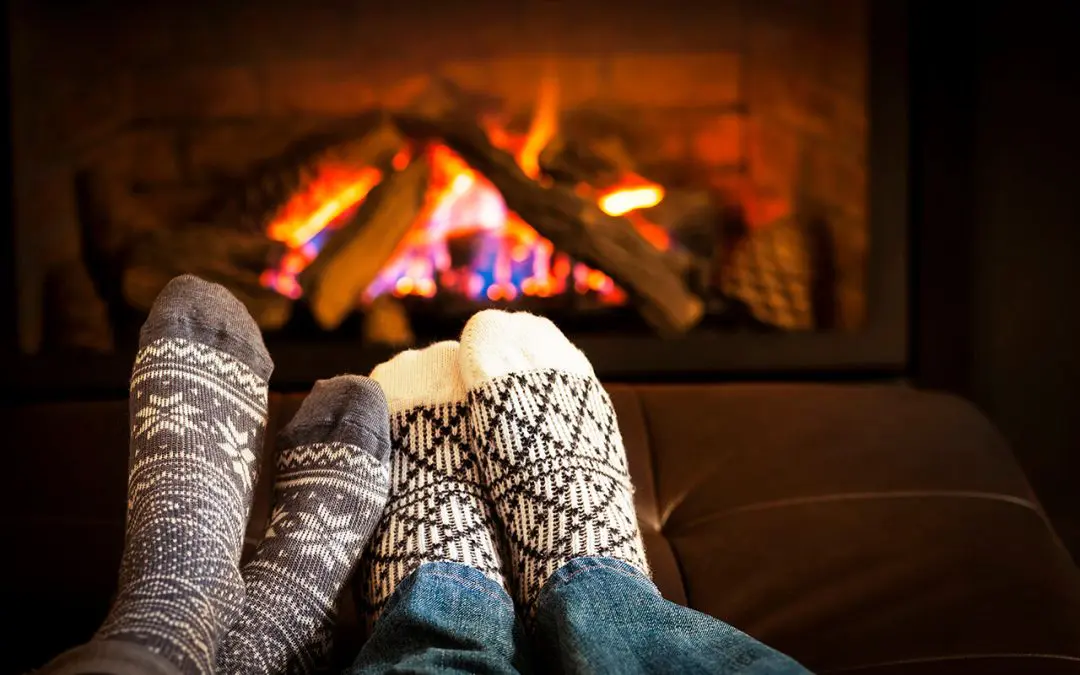There’s nothing quite like the warmth and ambiance of a roaring fireplace on a cold evening. However, that cozy glow often comes with a hidden cost. Traditional masonry fireplaces could pull a vast amount of heated air out of your home and up the chimney. The good news is that you don’t have to choose between comfort and cost. By making a few strategic adjustments and minor upgrades, you will significantly improve fireplace efficiency, allowing you to enjoy the fire while keeping heat inside your home.
Understanding the Fireplace Efficiency Problem
To improve fireplace efficiency, you first need to understand where the heat is going. Most of the inefficiency stems from the design of a traditional open hearth. As the fire burns, it pulls room air for combustion, creating a strong draft that sucks both smoke and large quantities of heated indoor air up the flue. A running fireplace often negates the heat it produces, leading to an overall net heat loss for the house. The key to resolving this issue lies in improving sealing and managing airflow.
Quick Fixes to Improve Fireplace Efficiency
The biggest and easiest area to tackle when you want to improve fireplace efficiency is sealing the large opening into your home when the fireplace is not in use. The damper is the movable plate located just above the firebox that closes off the chimney flue. Always check that the damper is completely closed when the fire is out and the ashes are cool. An open damper acts like an open window, allowing conditioned air to escape.
If your existing damper is old, rusted, or fails to provide a tight seal, consider upgrading it. A chimney balloon is an inflatable device inserted into the chimney flue that provides an airtight, temporary plug. For a permanent solution, a top-sealing damper (installed at the top of the chimney) provides a superior, weather-tight seal that significantly improves fireplace efficiency by preventing cold drafts from entering the chimney structure.
Glass Doors and Heat Circulation
Adding glass doors to your firebox is one of the most visible and effective steps you could take to improve fireplace efficiency. When the fire is burning, the glass doors prevent conditioned room air from being directly sucked into the flue. This reduces the amount of warm air being consumed by the fire, forcing the air needed for combustion to be drawn more locally. When the fire is out, closed glass doors act as a physical barrier, sealing the large opening and preventing cold drafts from entering the room. To maximize the heat that does enter the room, look for systems that incorporate a blower or heat exchanger. These systems draw cool room air into a chamber around the firebox, heat it up, and then push the warmed air back out into the room via small fans. This dramatically improves the net heat gain.
Maximizing Fireplace Efficiency
Even the way you build and manage your fire impacts how much heat you receive versus how much smoke you generate. Smart burning practices are a simple way to improve efficiency. Burn only properly seasoned firewood that has been dried for at least six months. Wet or “green” wood produces far more smoke and creosote (a flammable byproduct) and less heat because energy is wasted boiling the water out of the wood. You’ll notice better performance and reduced pollution immediately.
Large, roaring fires often result in more heat loss up the chimney and rapid creosote buildup. Smaller, hotter fires burn more completely, generate less smoke, and send less excess heat up the flue. Position the fire at the back of the firebox on a sturdy grate to guarantee good airflow underneath. These simple habits are essential for improving fireplace efficiency without costly renovations.
Frequently Asked Questions (FAQs)
Should I close the damper immediately after the fire goes out?
No. You must wait until the fire is completely out and all the embers are cold before closing the damper. Closing it too soon may allow smoke and carbon monoxide to re-enter your home.
How does a heat-circulating fireplace insert improve fireplace efficiency?
A heat-circulating insert is a small wood stove installed inside your existing firebox. It is sealed with glass doors and uses fans to actively pull air into an exterior chamber, heat it with the metal body, and push it back into the room.
What is the purpose of a fireback?
A fireback is a heavy cast-iron plate placed against the back wall of the firebox. Its purpose is to absorb heat from the fire and then radiate that heat forward into the room, rather than letting the heat escape through the masonry and into the chimney structure.
Do area rugs or furniture placement affect efficiency?
Yes. To benefit from radiant heat, avoid placing large pieces of furniture directly in front of the fireplace. Keep the area immediately in front of the hearth clear to allow the heat to distribute naturally.
Esham Inspections provides water testing and home inspections in Maryland and Delaware. Contact us to schedule our services.

